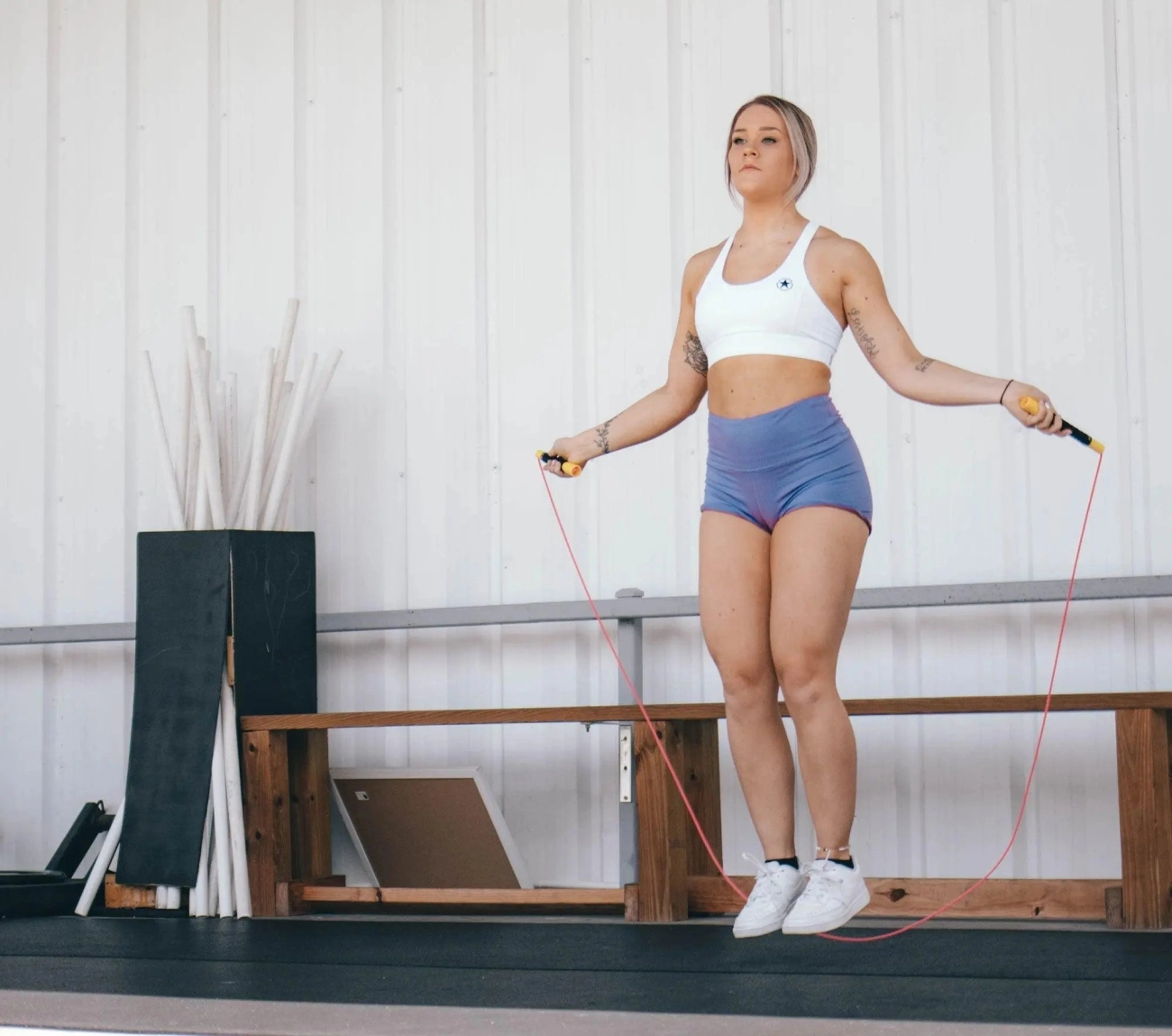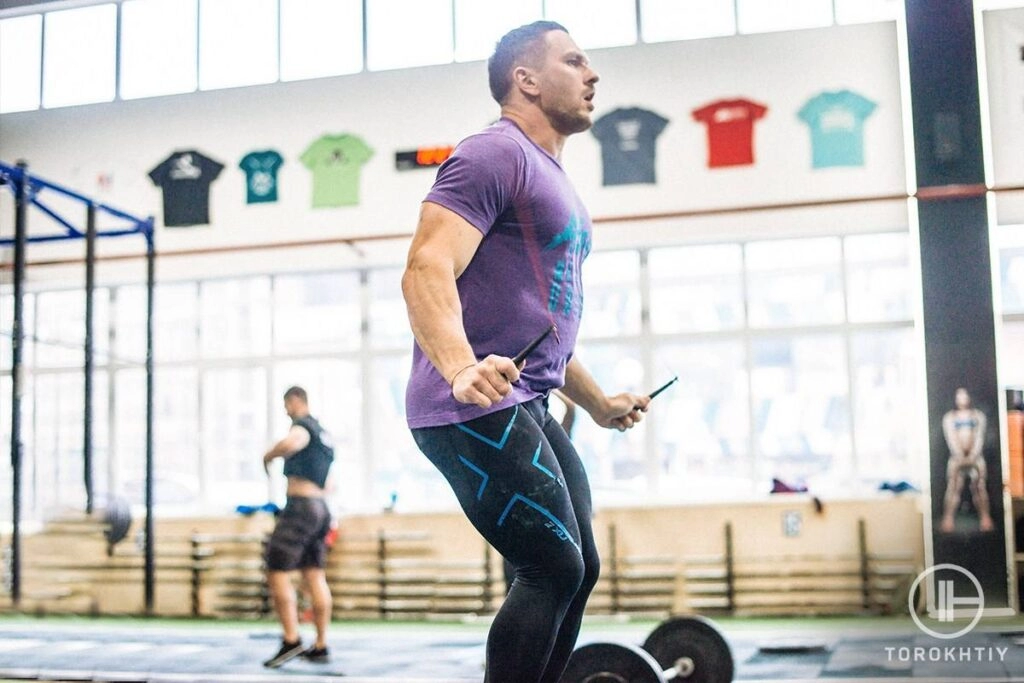Ready to master the crossover jump rope and take your workout to the next level? This dynamic move isn’t just fun—it builds coordination, boosts agility, and torches calories like few other exercises can. Whether you’re a beginner or a seasoned jumper, our expert tips for crossover jump rope will help you nail the technique and avoid common pitfalls. As a trusted name in PVC jump ropes, PVCJumpRope.com is here to guide you with practical advice and top-notch gear recommendations. Let’s jump in and get you crossing like a pro!
The Crossover Jump Rope Move What It Is and How It Benefits Your Workout
The crossover jump rope is a dynamic and engaging variation of the traditional jump rope exercise that adds a unique twist—literally. Instead of simply jumping with the rope swinging under your feet in a straightforward motion, the crossover involves crossing your arms in front of you during the jump. This requires precise coordination between your hands, arms, and feet, creating a more challenging and skillful movement.
What is a Crossover Jump Rope
At its core, the crossover jump is a jump rope technique where you cross your arms at the elbows as the rope comes around, forming an X shape in front of your body. The rope passes under your feet while your arms are crossed, then uncross before you land, ready to repeat. This move builds on the basics of jump rope but introduces a new level of skill and rhythm.
How It Differs from Basic Jumping Styles
Unlike basic jump rope styles where your arms stay parallel and the rope swings in a consistent circular motion, the crossover demands quick arm movement and greater hand-eye coordination. This makes the crossover not only a fun way to increase your jump rope skills but also a tool to improve:
- Upper body agility
- Timing and rhythm
- Wrist and forearm strength
These elements are less emphasized in traditional jumping but are key to mastering the crossover technique.
Physical Benefits of Incorporating Crossover Jumps
Adding crossover jumps into your routine offers several physical benefits beyond what traditional jump rope exercises provide:
- Improved Coordination: The alternating arm movement boosts neural connections between your limbs, enhancing your overall body coordination.
- Increased Upper Body Strength: Crossing your arms repeatedly strengthens your shoulders, wrists, and forearms.
- Enhanced Cardiovascular Fitness: The faster pace and complex movement escalate your heart rate, making crossover jump rope a highly effective cardio workout.
- Better Balance and Agility: The controlled foot placement needed in crossover jumping improves balance and agility useful in sports and daily activities.
- Higher Calorie Burn: Combining speed with complex movements increases the intensity, helping burn more calories efficiently.
If you’re ready to upgrade your jump rope routine with a move that challenges your body and mind, the crossover jump rope is a powerful addition. For the best experience, a quality PVC jump rope for crossover moves is essential, offering durability and flexibility for smooth swings. Check out PVCJumpRope.com for ropes designed specifically with crossover training in mind.
Next, we’ll dive into the step-by-step guide to performing the crossover jump rope properly for maximum benefit.
Step-by-Step Guide to Performing the Crossover Jump Rope
Mastering the crossover jump rope technique requires focusing on several key areas: hand and arm positioning, timing, coordination, and posture. Here’s a clear breakdown to help you get it right and build smooth, efficient crossovers into your routine.
Proper Hand and Arm Positioning
- Start with your hands slightly in front of your hips, holding the jump rope handles comfortably but firmly.
- Keep your elbows close to your sides; this helps maintain control and reduces unnecessary arm fatigue.
- As you prepare to cross, rotate your wrists inward, moving your hands across your body so the rope crosses in front of you.
- Avoid moving your whole arms or shoulders—let your wrists lead the crossover motion for better precision and less strain.
Correct Jump Rope Timing and Rhythm
- Timing is everything when learning how to do a crossover jump rope smoothly.
- Begin with a steady basic jump at a comfortable pace before introducing the crossover.
- The rope must swing just as your hands cross and before your feet land—think of the rope passing under your feet right at the peak of each jump.
- Keep your jumps low and quick, focusing on a consistent rhythm to avoid tripping on the rope or losing flow.
Coordinating Hands, Rope, and Feet During the Crossover
- Once you’re comfortable with hand positioning and timing, add foot coordination by jumping just high enough to clear the rope as it crosses.
- Your feet should stay close together and land softly, ready for the next rotation.
- The crossover happens as your hands move the rope in a figure-eight pattern, so practice the wrist movements independently before combining with jumps.
- This coordination is key to a smooth crossover and helps improve your overall jump rope technique and body coordination.
Breathing and Posture Tips
- Keep your head up and eyes looking forward. Good posture helps maintain balance and reduces neck or back strain.
- Stay relaxed in your shoulders and arms; tension can throw off your timing.
- Breathe naturally and steadily—avoid holding your breath as it can tighten muscles and affect your rhythm.
- Maintain a slight bend in your knees to absorb impact and promote fluid movement.
By following these detailed steps and focusing on each element individually, you’ll improve your crossover jump rope skills with greater control and confidence. For more tips on jump rope workouts and benefits, explore our guide on jump rope exercises for coordination.
Tips to Master the Crossover Jump Rope Faster
Mastering the crossover jump rope technique takes patience and focused practice. Here are some effective tips that help you improve your skill and build confidence quickly.
Start Slow and Build Rhythm Gradually
When learning how to do a crossover jump rope, don’t rush. Begin with a slow pace to get the timing down. Focus on syncing your arm crossover with each jump. Once you feel steady, gradually increase your speed without losing control.
Use a Lightweight Flexible PVC Jump Rope
A PVC jump rope is ideal for crossover moves because of its flexibility and light weight. This helps with faster rotation and makes it easier to control your hand and wrist movements, reducing the chance of tripping over the rope.
Practice Hand and Wrist Movements Separately
Before jumping, spend time practicing hand and wrist crossover motions without the rope or with the rope stationary. This builds muscle memory and makes coordinating the rope and footwork smoother when you start jumping.
Incorporate Skipping Drills for Coordination
To improve your overall jump rope coordination, try drills that focus on footwork and body rhythm separately. Combining these exercises will help with timing your jumps during the crossover and reduce the chance of mistakes.
Stay Relaxed to Avoid Unnecessary Tension
Keeping your body relaxed, especially your shoulders and wrists, helps maintain smooth and efficient movement. Tension can cause jerky motions and tire you out quicker. Focus on loose, controlled movements for better performance.
Focus on Consistent Practice Intervals
Short, regular practice sessions of 10-15 minutes daily work better than long, exhausting workouts. Consistency helps your brain and muscles adapt faster to the jump rope crossover basics, making learning more effective and enjoyable.
By following these tips, you’ll see steady improvement in your crossover jump rope skills while building a better workout routine that fits local training habits and preferences.
Common Mistakes in Crossover Jump Rope and How to Avoid Them
When learning how to do a crossover jump rope properly, several common mistakes can hold you back or even increase the risk of injury. Knowing these pitfalls and how to fix them can speed up your progress and improve your jump rope crossover technique.
Crossing Arms Too Early or Too Late
Timing is everything in a crossover jump rope move. Crossing your arms too early or too late disrupts the rope’s flow and often causes it to snag or tangle. To avoid this, focus on coordinating your hands so they cross just as the rope swings under your feet. Practice slow arm crossings without jumping first to get comfortable with the right rhythm.
Jumping Too High Losing Rhythm
Jumping too high is a common mistake, especially for beginners excited to clear the rope. However, jumping higher than necessary wastes energy and throws off your timing. Keep your jumps low and controlled—just enough to let the rope pass under your feet—this helps maintain a steady crossover jump rope workout rhythm.
Using Inappropriate Rope Length or Weight
Using the wrong jump rope size or weight can make crossover moves tougher than they need to be. A rope that’s too long or too heavy slows down your hand speed and interferes with smooth arm crossing. Opt for a lightweight, flexible PVC jump rope designed for crossover training with the right length tailored to your height for better control and comfort.
Poor Posture Leading to Fatigue or Injury
Good posture is crucial when practicing any jump rope exercise, but it’s especially important for the crossover jump rope. Slouching or leaning forward puts extra strain on your back and shoulders, leading to fatigue and even injury over time. Stand tall with a slight bend in your knees, keep your shoulders relaxed, and engage your core to support smooth, injury-free movement.
Avoiding these mistakes will not only improve your crossover jump rope speed but also make your sessions safer and more effective. Consistent practice, paired with the right equipment and posture, will help you master this advanced jump rope technique without frustration.
Equipment Recommendations for Crossover Jump Rope
Choosing the right equipment can make a huge difference when learning and mastering the crossover jump rope technique. For crossover moves, I always recommend using a PVC jump rope. Here’s why it stands out:
Why PVC Jump Ropes Work Best for Crossover Moves
- Durability and Flexibility: PVC ropes are strong enough to handle rapid, repetitive crossing motions without breaking or kinking. Their flexibility helps the rope smoothly glide through the hands, making it easier to maintain the rhythm and timing essential in crossover jump rope workouts.
- Lightweight Control: They’re light but not flimsy, offering excellent control over hand and wrist movements, which is key to perfecting the crossover move.
Choosing the Right Rope Length and Handle Grip
- Proper Rope Length: Make sure your rope length fits your height—stand on the middle of the rope and pull the handles up. Ideally, the handles should reach somewhere between your armpits and chest. Too long makes crossing tricky; too short limits jump clearance.
- Comfortable Handle Grip: Look for handles that offer a secure, comfortable grip. A good grip minimizes wrist strain and allows smooth rotations. PVCJumpRope.com offers several options designed specifically for training at faster speeds and tricky moves like cross rope jumps.
PVCJumpRope.com Products Ideal for Crossover Training
At PVCJumpRope.com, you’ll find jump ropes crafted for those serious about mastering crossover moves:
- High-quality PVC cables that resist stretching or snapping
- Ergonomic handles with non-slip grips for better control
- Ropes designed for speed and agility, perfect for intense jump rope crossover workouts and drills
They also offer easy customization options if you want a rope tuned exactly to your style or body type.
Maintenance Tips to Keep Your Rope Performing Well
- Store your rope properly by hanging it or coiling it neatly to avoid kinks.
- Wipe down the PVC cable and handles regularly, especially after workouts, to remove sweat and dirt.
- Check the rope length and condition periodically to adjust or replace parts as needed, ensuring smooth, safe crossover jumps every time.
Investing in the right equipment right from the start saves time and helps you progress faster in your jump rope crossover basics and advanced training.
Training Drills and Progressions for Crossover Jump Rope
Mastering the crossover jump rope takes practice, and building up gradually with targeted drills will get you there faster and safer. Here’s a straightforward training progression to improve your coordination, timing, and speed with crossover jump rope exercises.
Warm Up Wrists and Arms
Before starting any crossover jump rope routine, it’s crucial to warm up your wrists and arms to prevent strains and improve flexibility.
- Wrist Circles: Rotate wrists clockwise and counterclockwise for 30 seconds each.
- Arm Swings: Swing arms forward and backward, loosening shoulders.
- Light Rope Rotations: Hold the rope handles and make smooth circular rotations without jumping to get your arms used to the motion.
Solo Arm Crossover Drills Without Jumping
This drill isolates the arm movement needed for a clean crossover without adding the jump element. It helps nail the timing and coordination of crossing your arms.
- Hold handles firmly and keep your elbows slightly bent.
- Practice crossing your arms in front of your body like you would during a crossover.
- Focus on smooth wrist action and avoid tensing the forearms.
- Repeat for sets of 20 crosses, rest briefly, then repeat.
Combine Basic Jump with Crossover Intervals
Once comfortable with arm movement, add in basic jumps mixed with crossover attempts.
- Start with 20 regular jumps to build rhythm.
- Pause briefly, then do 5 crossover jumps.
- Repeat this cycle for 3 to 5 rounds.
- Keep your jumps low and controlled to maintain steady timing.
Increase Speed and Repetitions Safely
Progressing in speed and reps boosts endurance and builds muscle memory.
- Gradually add more crossover jumps between basic jumps.
- Use a metronome or music to keep a consistent tempo.
- Keep jumps low—no need to jump high as it wastes energy and breaks rhythm.
- Take short breaks between sets to avoid fatigue and reduce injury risk.
- Aim for multiple short practice sessions rather than long exhausted ones.
Key Tips for Progression Success
- Stay relaxed throughout your shoulders, arms, and legs.
- Focus on consistent timing between your arms, rope, and feet.
- Use a lightweight PVC jump rope for smoother crossover motion.
- Track your progress by increasing repetitions or cutting break time gradually.
Following this training drill progression will help you build smooth crossover jump rope skills with better coordination and speed. Remember, steady practice beats rushing every time!
FAQs on Crossover Jump Rope Technique and Training
How long does it take to master the crossover jump rope
Mastering the crossover jump rope move varies by individual, but typically it takes several weeks of consistent practice to get comfortable. Beginners might spend 2 to 4 weeks focusing on hand coordination and timing before smoothly incorporating the crossover motion into their routine. The key is gradual progress—start slow, build rhythm, and increase speed only when you feel confident.
Can beginners do crossover jump rope
Absolutely, beginners can do crossover jumps, but it helps to have basic jump rope skills first. If you’re new to jumping rope, spend time mastering the simple bounce and rhythm. Once that feels natural, you can begin practicing the arm crossover motion separately, then combine it with jumping. Many beginners find success breaking the crossover down into parts to improve coordination.
Is crossover jump rope good for weight loss
Yes, the crossover jump rope is excellent for weight loss. It increases heart rate quickly and engages multiple muscle groups, including arms, shoulders, core, and legs. Because it’s more complex than basic jumps, it burns more calories and improves cardiovascular health. Adding crossover drills to your jump rope workout can ramp up intensity, helping with fat burning and endurance.
How to avoid rope tangles during crossover jump rope
Rope tangles are a common frustration, but you can avoid them with these tips:
- Use a lightweight, flexible PVC jump rope designed for crossover moves—these ropes handle twists better.
- Keep wrists loose and control the rope with subtle hand motions, not big arm swings.
- Maintain consistent rhythm and timing to prevent the rope from overlapping or twisting unpredictably.
- Practice arm crossover movements slowly without jumping to get a feel for rope control.
- Make sure your jump rope length is correct—too long or too short can increase tangles.
- Regularly inspect and maintain your rope to prevent stiffness or damage that causes snags.
By focusing on these points, you’ll reduce tangles and improve your overall jump rope crossover speed and fluidity.



